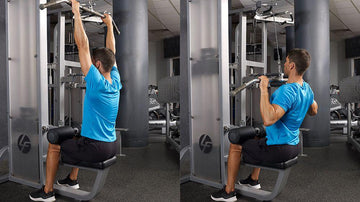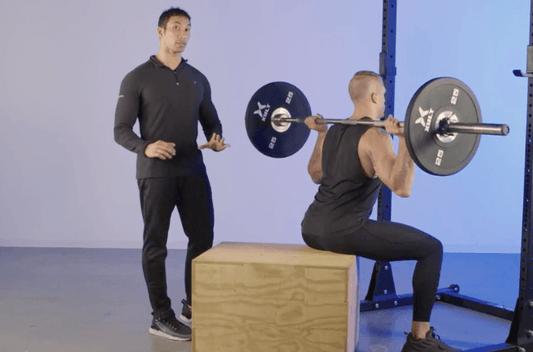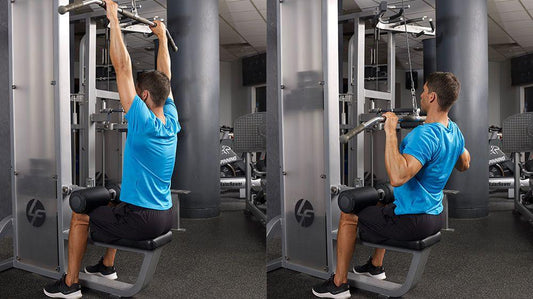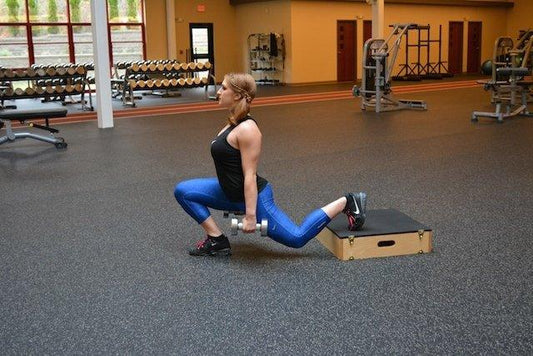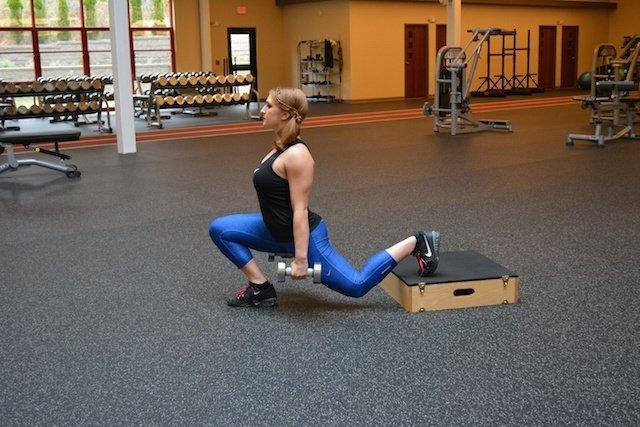

Fact vs. Fiction: The Bulgarian Lunge
Table of Contents
In this age of “evidence-based practice,” everyone is looking for the truth about fitness training trends. If you want to know the side effects of taking too much vitamin A or if squats are bad for your knees, you can find out in a few minutes on your smartphone. Problem is, information is one thing and truth is another. For every so-called fact there are a million opinions that argue otherwise. Some myths just never die. In the fitness world one myth that won’t go away is about the Bulgarian lunge.
In 1988 when I was a strength coach at the Air Force Academy, I heard that Bulgarian weightlifting coach Angel Spassov was in Colorado, so I invited him to visit our facility. I spent many hours listening to his advice on training, and during this time he told me about several exercises that he thought my athletes should be doing. One was a specific type of leg exercise in which the rear foot was elevated. This is an exercise Spassov claimed was being used by world and Olympic champion weightlifters from Bulgaria.
Before we get into the major controversy surrounding this exercise, consider that this type of exercise is more appropriately called a split squat because both feet remain stationary. As such, some articles and YouTube videos discuss the Bulgarian lunge and others refer to the same exercise as the Bulgarian split squat – there’s even one fitness writer who calls it the Bulgarian split lunge!
Back in 1988 Spassov showed me the exercise by teaching it to several of my athletes. Spassov had them assume a split position with the rear foot elevated on a low platform, about four inches high. He was adamant about the height of the platform and about keeping the ball of the rear foot on the platform (not extended back so that the top of the toes rested on it). As such, the back leg was still strongly active in the movement
. 

Another aspect of the lift was that during the lift the hips descended straight down (like an elevator) and the knee did not travel forward much (like an escalator). I heard that two-time Olympic Games track cycling gold medalist Anna Meares of Australia could perform this variation of the split squat with 363 pounds for three reps on each leg.
I used this exercise with many of the athletes at the Air Force Academy, including football players and swimmers, along with split squats in which the foot was not elevated. I should mention that one of my female athletes lifted 205 pounds on each leg on this exercise, and one male athlete lifted 505 on each leg. The male athlete was Chad Hennings, a defensive lineman who won the 1987 Outland Trophy, which is awarded to the best college lineman in the country.
I also showed the exercise to the elite ice dancers I was training, one being Gorsha Sur, a former junior champion from Russia who went on to win the US national championships with his partner Reneé Roca. Sur told me that to simulate the positons that occur in his sport, it would be better for ice dancers to elevate the rear foot at least 12 inches and to hold the barbell on the front of the shoulders. I wrote about this exercise in an international skating magazine called Blades on Ice, and jokingly called it the “Gorsha Lunge.” After trying this variation of the exercise, two swimmers came to me the following day and said, “Coach Goss, our Gorshas are sooooo sore!” True story.
What made the Bulgarian lunge so controversial? Coach Spassov gave the impression that the Bulgarian weightlifting coaches had replaced back squats with this lunge and various forms of step-ups, but other colleagues say otherwise. Spassov reportedly said that Leonid Taranenko, a Russian weightlifter who still holds the highest result ever in the clean and jerk in 1988 with 586.4 pounds, had replaced back squats with these exercises. Spassov said Taranenko could do a high step-up with 396 x 3 with each leg. Do the facts bear out Spassov’s claims? Let’s start with the big Russian, Taranenko.
In an interview with Andrew “Bud” Charniga, Taranenko said he occasionally performed these exercises (Bulgarian lunge and step-up variations) to reduce the stress on his spine, but that he still squatted. Taranenko also said his best squats were 660 x 3 in front and 837 in back with a two-second pause at the bottom!
The upshot is that the weightlifting community has dismissed the value of replacing squats with the Bulgarian lunge. However, some strength training celebrities have been recommending performing the Bulgarian lunge with the back leg positioned on a platform about 12 inches high, sometimes higher. Caution: Unless you’re an ice dancer, this is not a good idea.
The problem with elevating the rear leg so high in a split squat is that you put the spine in extreme hyperextension – and the more you bend your front leg, the greater the stress. The stress is even worse for those who already have an excessive degree of anterior pelvic tilt. The result is that this variation of the exercise may cause lower back spasm and discomfort and may even injure some of the muscles that flex the hip.
Most importantly, rather than having the hips move straight down like an elevator, we push the hips forward to permit a greater range of motion. More range of motion potentially means more muscle damage, and more muscle damage means greater growth stimulation. It also helps prevent structural imbalances that can affect performance and increase the risk of injury.
If there’s one thing the Bulgarian lunge controversy can teach us about exercise selection, it’s the importance of distinguishing hype from reality. The best thing to do is to look at exercise science and the practical experience of accomplished personal trainers and strength coaches to determine if a specific exercise is right for you.



